Srivaishnavam Parambaryam, Traditions & The Culture that stands Class apart from othersEssence of Srivaishnavam Practices – Kolangal – Rangoli

Rangoli Known As Kolam in Tamil. A few Drawing Sketches
Kolam – An Artistic View at your Home Entrance
Kolam – meaning: A decorative appearance, Beauty
TRS Iyengar
In Tamilnadu, one would find a finest drawn and artistic drawing decorating every house at the front entrance. These drawings are not just merely a decoration, but it has lot more significance to this practice. During festival seasons and on any auspicious functions, the drawing are drawn still larger even extending up to the street! A classic example can be noted from these, a woman’s creative at it’s best, talent to make it an even more attractive. There is also a competition amongst the neighbors, who draws a finest one! These artistic kolam drawings also an impressive of positive attitude one provides. Every home with happy mood and positive attitude used to draw such fine kolams. Only when there is a death or grief, then it would totally be absent at their homes.
In the olden days, they used pure rice flour to draw such art. It was a kind of feeding the insects, specially the ants of all sorts, that will get its days food from these drawings. Thus, they prevented these ants from entering their home. These sort of drawings also proved the talent and creative imaginations of the house ladies. Oh, while they drew these Kolam, they used bend their body physically which prevented growing pot belly!. Yes, this also worked as a physical exercise for them and gave ample scopes to maintain their fitness as this exercise being a regular routine. It also reflected on a woman’s nature, her recording patience, creative values, changing mood elevations! Yes, these are too small to judge at the first look, but surely holds a high esteem of the person who draws the Kolam every day at her front door outskirts. Only an experienced person on such psychology and sociology can spot the difference!
This Kolam also an impressive mood analyzer of a woman, who does all the chores of their house hold routines. These drawings would be absent only at the homes, where some one has passed away; they used to mourn for one full year for the departed soul, and the absent of such artistic Kolam would be an indication for a visitors.
If some family is out of station for quite some times, then these marking Kolams would be absent. The thieves used to notice this to enter such homes to steel the valuables. So, when such drawings of “Kolam” is present, even the thieves too would desist from entering such homes. To avoid such occurrences, the neighbors used draw some sort of Kolam at the home entrance of the absentees home. Thus, strengthening the bondage of neighbor-hood.
Apart from the above facts, it is widely believed that Sri Lakshmi, the Goddess of wealth resides at the homes where such Kolam art is present every day. Since this is a routine change that take place every day; before drawing these artistic Kolam, they used to cleanse the place with a mixture of Cow dung and water, sprinkle it at the place where they used to put the Kolam drawings. This is in a way acted as an anti-bacterial agent. Though this practice is not continued in big towns and cities, one can see it in the remote villages and interior places. This practice is more visible during the festive season and specifically during 15th December to 15th January every year. The period is known as Dhanur month and is the fag end of the night time for the Brahmma Logam. On or about 15th January, the Sun enters into Tropical Capricorn which is known as Makara Sankaranthi in northern part of India and Pongal in Tamilnadu. This specific season, the Kolams are largely visible at every house hold, shed and shelters. There is surely another reason for drawing such larger artistic Rangoli kolam on these days. When the star Sun transits through tropical Capricorn, there are lots of changes taking place, viz. magnetical, tropical, climatic and many other changes that are unknown to the humans naked eye. Yesteryear persons knew, if not exactly all, at least a few; these knowledge made them to capture the available natural gifts in an useful method, namely Yantra form! Yes, these artistic Kolams are referred to as Yantra in a meaningful way. Such a Yantra display in an artistic way in the front entrance of their home, these Kolam helped them to get some sort of positive energy, not only to the person who draws it but also the entire family. Though there is a specific method and system existed in drawing such Kolams, that too with pure rice flour, these are a forgotten issue nowadays!
A few sketches of such drawings are given below in image format, for you to treat your eyes. These images are the properties from the blog at the URL: http://kaleido-kolangal.blogspot.com and I admire the mother who has given these beautiful art to the next generation.
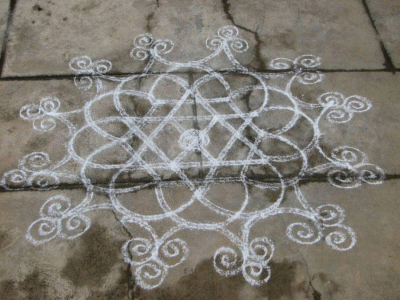 | 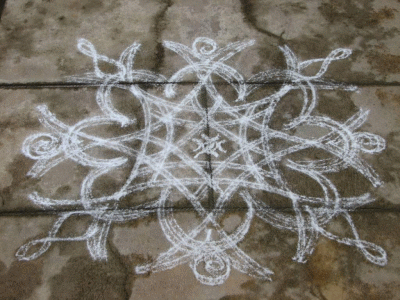 |
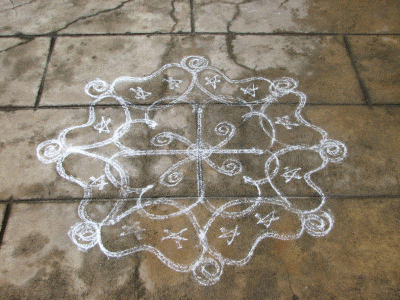 | 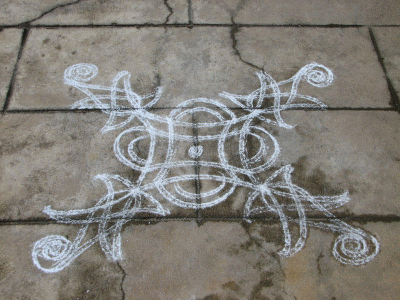 |
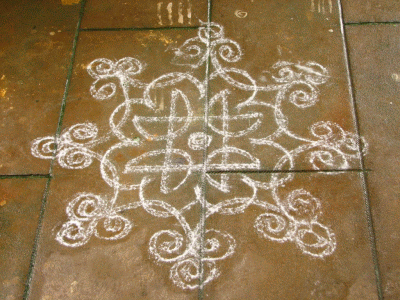 | 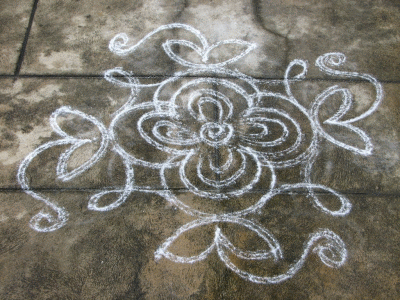 |
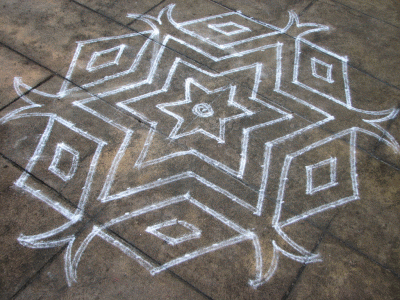 | 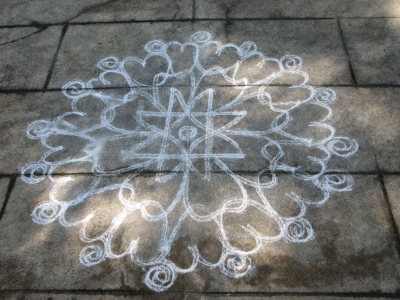 |
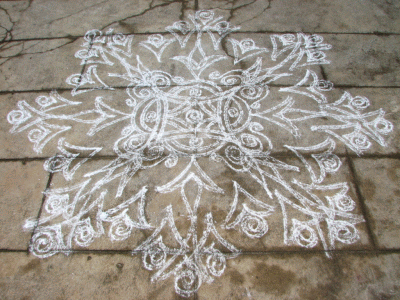 | 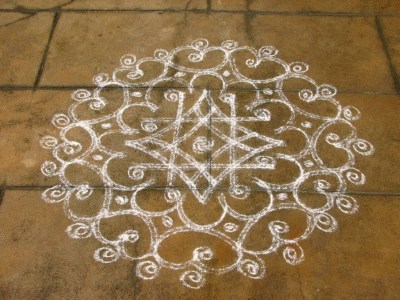 |
 | 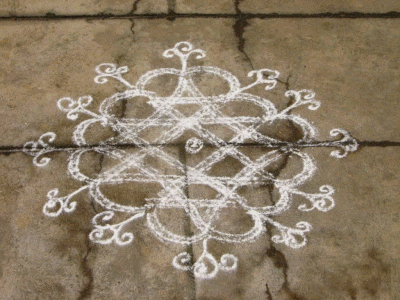 |
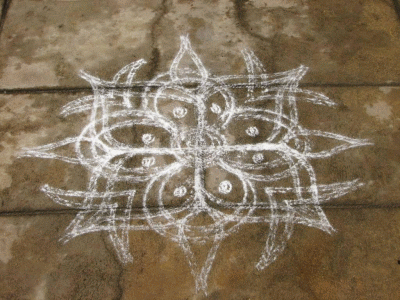 | 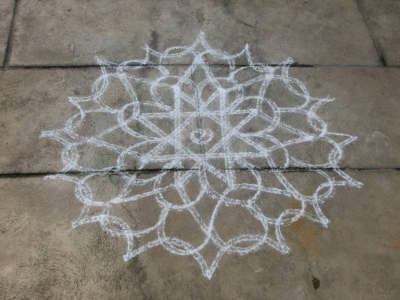 |
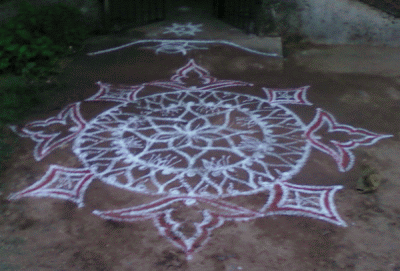 On her younger son’s Upanayanam day, my elder sister drew this Kolam at the front door entrance, which was appreciated by one and all. Date: 29.06.2011 at Ambattur, Chennai. On her younger son’s Upanayanam day, my elder sister drew this Kolam at the front door entrance, which was appreciated by one and all. Date: 29.06.2011 at Ambattur, Chennai. | 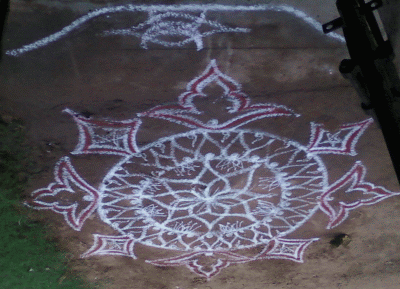 This is by my elder sister during her son’s upanayanam on 29th June 2011. This is by my elder sister during her son’s upanayanam on 29th June 2011. |

Leave a Comment
You must be logged in to post a comment.